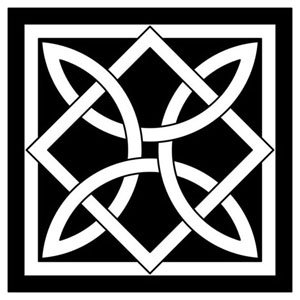
SG206A Program D
Paper Restoration in Artworks and Archival Documents
3 Units
Instructor: Profs. Manuela Belli (first 2 weeks) and Laura Chignoli (second 2 weeks)
COURSE STRUCTURE
Mornings: Theoretical Lectures 3 hours (SG206A)
Afternoons: 4 hours workshops (SG206B)
The courses include a study visit to Fabriano Paper Museum and special sessions with an external teachers.
Course 1 and 2 Descriptions
REQUIREMENTS: Courses SG206A (theory) and SG206B (workshop) must be taken together.
Course 1
Paper Media and Restoration Methods for Artworks
This lecture and workshop course on the restoration of paper media aims to give an overview of the field, including instruction on the nature and history of paper, the traditional methods of paper making, the different artistic techniques, the processes of deterioration over time, and the various methods of handling and mounting, conservation and restoration of artworks on paper.
Students learn the following: the material nature and the various typologies of paper (both traditional and new), the artistic techniques, the various agents and processes of deterioration and how they impact both paper and drawing media and the various methods of conservation and restoration to counteract them.
Course 2
Handwritten and Printed Archival materials Restoration Methods
The second course is a lecture and workshop where students focus on archival documents and original manuscript material from local historic archives (16th to 19th centuries), and learn their evolution in history. The following subjects are also treated or practiced: decoration of paper, dry cleaning, gentle or local washing, mending tears in paper, infilling loses, lining weak paper structures, deacidification, flattening, simple sewing and proper long-term conservation of archival materials.
The course includes a study visit to “Santo Chiodo” depot (Spoleto) and special session with an external teacher.
[The workshop also includes work on the digitization of the San Gemini Historic Archives.]
Students learn the following: the material nature and the various typologies of inks, writing, printing processes, the structure of archival bindings, the various agents and processes of deterioration of paper documents and how they impact both paper and bindings or cases and the various methods of conservation and restoration to counteract them.
Course Objectives
These courses are aimed at two types of students: those planning to become restorers and those planning to manage paper-based resources in libraries, archives or museums. For those planning on a career as a restorer, this is a good introduction to the field to be followed up by further education. For those planning to manage paper-based resources, it is a good overview of the field and offers insight and experience on the safe storage and conservation of paper materials.
Summary of Lecture Content
Course 1
Instructor: Manuela Belli
SG 206A + SG 206B (first 2 weeks)
History of writing supports and their evolution:
Handmade paper and watermarks
Modern paper
Art on paper (prints, watercolors, drawings, collage etc.)
Chemistry, properties and behavior of paper, cardboard and adhesives and their characteristics:
+ special seminar with Prof. Leonardo Borgioli
Cellulose
Observation with microscope and reflected, translucent and grazing light
Testing to identify adhesives and additives used in paper during manufacturing and mounting artworks
Measuring pH and deacidification
Adhesives used in paper restoration.
Techniques and methods to identify artworks:
Print techniques
Xylography
Etching
Lithography
Silk-screen printing
Photography
Techniques of drawing (charcoal, pencil, ink etc.)
Techniques of watercolor, tempera, oil and acrylic on paper.
Approach to paper artworks restoration:
Scheduling restoration
Process of restoration
Equipment
Techniques
Results.
Deterioration of artworks on paper:
Main causes for the deterioration of artworks on paper
Common damage in artworks on paper (foxing, mould, oxidation, incorrect mounting and mechanical damage etc.)
Terminology of paper damage
Processes and examples of deterioration.
Methods of restoring artworks on paper
Dry cleaning (with brush, rubber, scalpel)
Backing removal techniques (local humidification, gels etc.)
Washing (if necessary, locally by using vacuum table, blotting papers, or using a screen)
Sizing/consolidation
Drying paper
Reintegration of tears and missing sections
Criteria for the choice of materials and techniques for reintegration
Coloring the paper
Flattening with presses and weights or on panel (similar to Karibari)
Handling, mounting and housing techniques for storage or exhibitions.
Course 2
Instructor: Laura Chignoli
SG 206A + SG 206B (last 2 weeks)
Books, manuscripts and archival materials. Their evolution in history:
+ special seminar on paper marbling with Laura Berretti
Ancient writing supports: clay, wax, metal, papyrus, animal skins (particular focus on parchment)
Handwritten documents: inks
History and technique of printing
Ancient and modern archival materials (documents, letters, posters, photographs etc.)
Materials used in bookbinding: cardboard, decorated paper, fabrics, leather, strings, natural fibers etc.
Ornamentation and other materials besides paper, seals, stamps, colors and adhesives
Decorated papers history and workshop with Laura Berretti
Collection structure of unbound or simply sewed documents (manuscripts, files, folders, maps, albums, rolls, etc.)
Covers and slipcases
Sewed, glued and stapled documents
Bindings without glue: archival direct anchoring bindings, limp bindings, western and oriental unsupported bindings.
Approach to paper documents restoration:
Scheduling restoration
Process of restoration
Equipment
Techniques
Results.
Deterioration of paper documents:
Main causes for the deterioration of paper documents
Common damage in archival documents (ink corrosion, mould, insects, uncorrect storage etc…)
Terminology of paper damage
Processes and examples of deterioration.
Methods of restoring paper documents:
Collating documents
Disassembling a collection of documents
Dry cleaning (with brush, rubber, scalpel)
Washing (if necessary, locally by using vacuum table, blotting papers, or using a screen)
Sizing/consolidation
Drying paper
Reintegration of tears and missing sections / Leafcasting
Criteria for the choice of materials and techniques for reintegration
Lining with thin Japanese tissue
Flattening with presses and weights
Handling, mounting and housing techniques for storage or exibitions with examples from suppliers catalogues.
Assignments
Workshop projects, reading assignments
READINGS
1. Dard Hunter, Papermaking, The History and Technique of an Ancient Craft, Dover, New York, 1978.
2.Bamber Gascoigne, How to Identify Prints, A complete guide to manual and mechanical processes from woodcut to ink-jet, Thames and Hudson, 1998.
3. Bernard C. Middleton, The Restoration of Leather Bindings, Oak Knoll Press – The British Library, 1998











